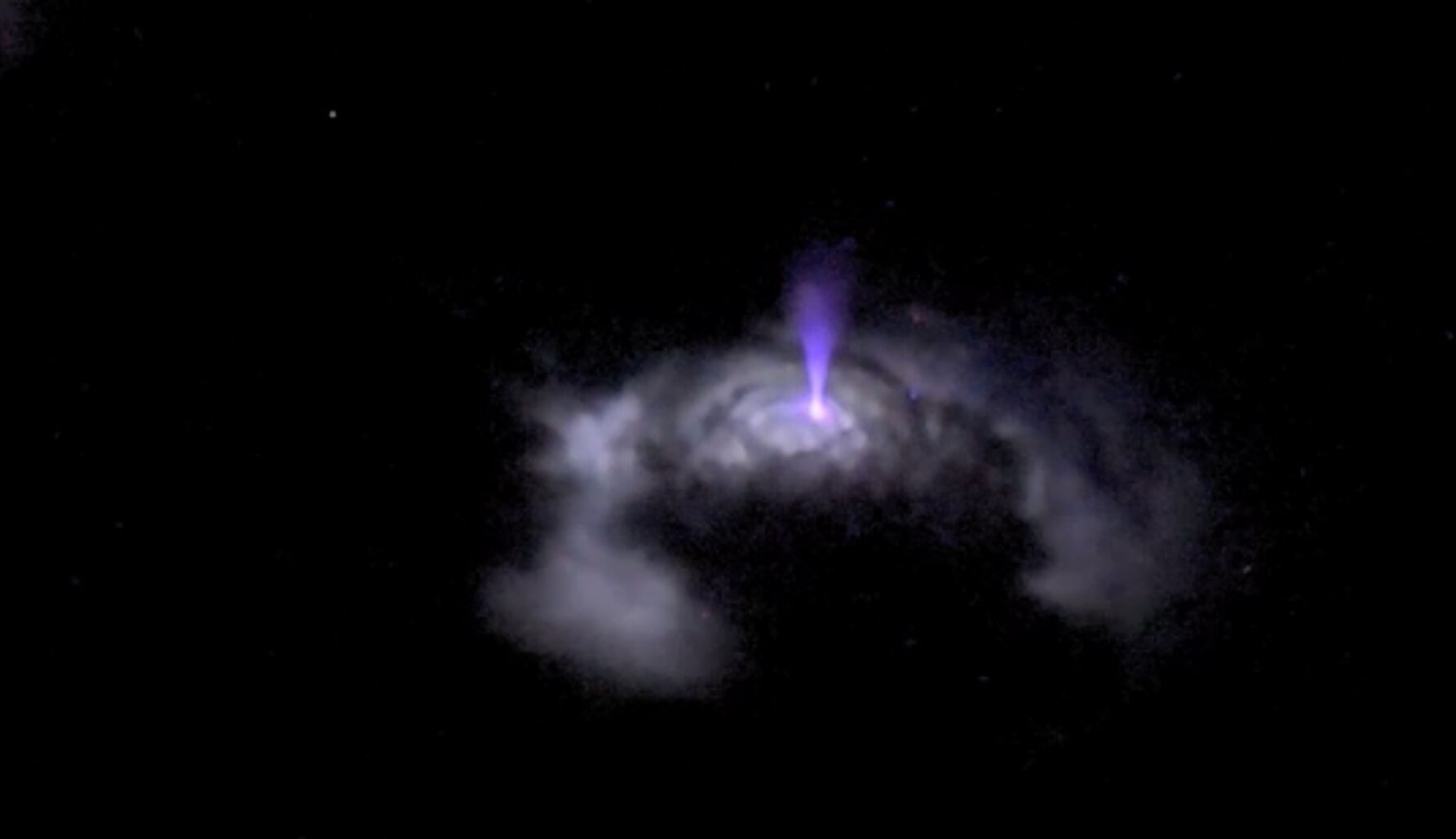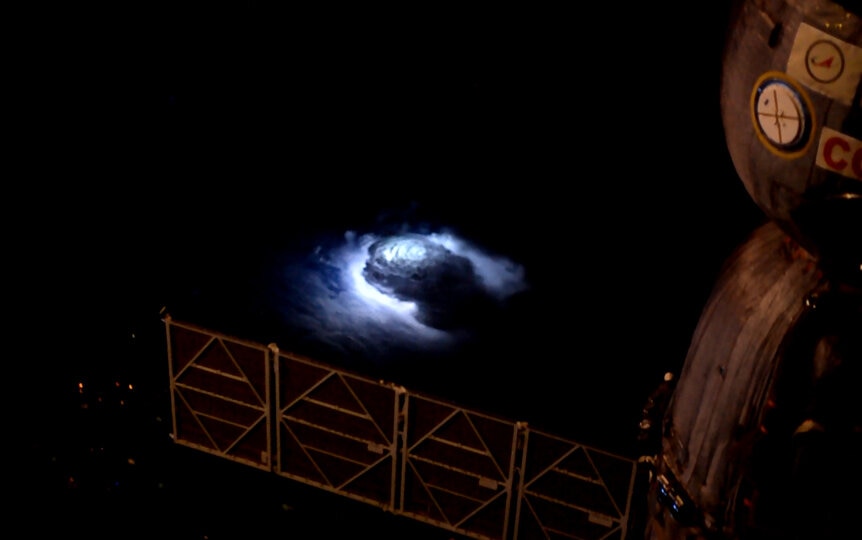Create a free profile to get unlimited access to exclusive videos, sweepstakes, and more!
Mysterious "blue jets" blasting upwards from clouds seen from space

[Image credit: NASA / ESA]
You’d think, after hundreds of years of studying lightning, and decades of advanced physics and computational techniques applied to it, we’d understand a lot about it.
Well, we do. But, surprise: There are entire kinds of lightning we didn’t even know existed until a couple of decades ago. Even cooler surprise: Thanks to an experiment aboard the International Space Station we’re learning a lot more about them.
For a century, pilots had talked to each other about weird flashes of red light they saw above thunderstorms. Official reports were hard to come by — naturally, a pilot might be concerned about their license if they reported seeing things like that — and scientists tended to downplay the reports anyway.
But that changed in 1989, when a scientists captured one of those weird flashes on video by accident. Since then, a bunch of different types of these flashes (collectively called transient luminous events, or TLEs) have been found. They’re given delightful names like red sprites, blue jets, and ELVES. Wikipedia has a decent intro to TLEs.
They’re related to the complicated electric fields in clouds. The details are complex, but ice crystals are swept along in rising and falling columns of air inside a cloud. As they rub against each other, a static charge is built up. Small, positively charged ice crystals flow upward, but heavier, more lumpy collections of ice, called graupel, get a negative charge, and fall. This separation of charges can create a vast voltage difference, and nature doesn’t care to maintain something like that for long. To balance it, a tremendous and sudden flow of electricity is triggered: lightning.
But there are other ways the cloud can discharge its energy. The electric field can reach high above the cloud, and under the right conditions can create a static discharge in that direction, as well. The air is thinner up there, with different conditions, so the discharges are different. Sometimes, the flashes are wide and fanlike, and glow red as nitrogen molecules in the upper atmosphere get zapped and then release that energy. Those are the red sprites.
Sometimes, the discharge is more focused, and the nitrogen gets a bigger zap that makes it glow blue. Those are blue jets. There appear to be another kind that try to get started, but don’t quite make it to be a full jet. Those are called blue starters.
These phenomena are amazingly cool and beautiful and eerie, but the problem is they’re all really hard to study. The geometry is bad; from the ground, it’s difficult to photograph or video the region above the clouds. Planes can help, but the best way to study them is from space. Even then, it’s a pain; most satellites look straight down, making it hard to see what’s what (like looking down the barrel of a gun). Pointing at the Earth’s horizon helps, but then the clouds you see are thousands of kilometers away, so you lose details.
In 2015, though, European Space Agency astronaut Andreas Mogensen saved the day. He used a Danish experiment called Thor (named for obvious reasons) to study these lightningesque events. Thor uses a camera aimed about halfway between straight down and the horizon. In a 180 second video, Mogensen captured a huge thundercloud in the Bay of Bengal generating hundreds of blue jets and starters. Due to the viewing angle, the cloud was only hundreds of kilometers away, so smaller details were visible. Here’s an excerpt from that video (make it full screen, high-res, and I suggest running it at ½ to ¼ speed to see the flashes):
The image at the top of this article is a frame from that video, and shows a blue jet emanating from the top of the cloud. The jets seen started at about 18 kilometers above the Earth’s surface, and some reached to more than 40 km high. The discharge expansion speed of the jets is staggering; the scientists studying the data estimate their speed at 500 kilometers per second. If you flew in a plane that fast, you’d cross the US in about 10 seconds.
Mogensen, himself, gave a talk about Thor and the TLEs, and the short video from that is also well worth your time to watch:
It’s still not clear how all these phenomena work, but then studying them scientifically is all still a bit new. Experiments like Thor will go a long way towards helping. Our understanding of wha,t exactly, goes on in this part of the atmosphere above thunderstorms is incomplete, but it’s important we figure it out. A lot of energy is being tossed around there, and it no doubt affects the atmosphere; certainly greenhouse gases are being exchanged between different layers of the atmosphere in that region. That makes this worth studying all by itself.
Also? It’s just so dang cool. That, too, is reason enough.



























